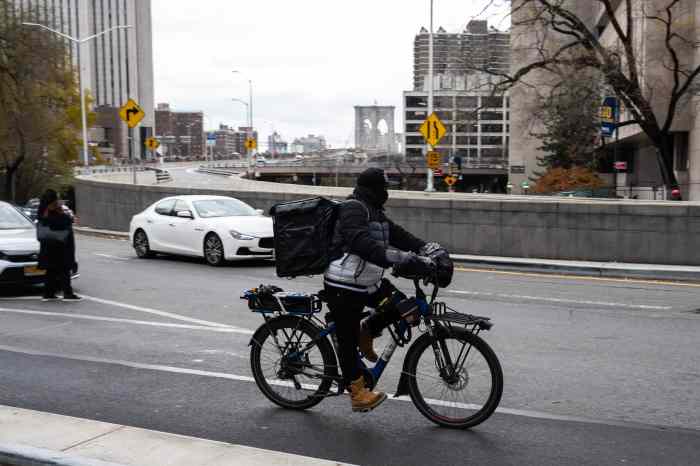In July, many Queens residents focused on enjoying the warm weather and pursuing their favorite outdoor activities. Early one sunny morning, about 20 people at the Queens Botanical Garden moved in unison, slowly arcing their hands in graceful, complicated movements while balancing on one foot.
Accompanied by traditional Chinese music, they moved across a dappled stretch of pathway, following instructions given in Chinese.
Han Zhong Huang, 84, a Tai Chi master, was among the most dedicated in the group, coming out to practice even on the coldest days of winter. He said that one of his favorite things about doing Tai Chi at the Botanical Garden is the other participants. "I love the participation of the various groups," he said with the help of a translator, "the unity and happiness of the people."
Rapid progress was evident in August in the reconstruction of the 43,000-square-foot former Bayside Theater. A trio of Bayside businessmen purchased the building in 2001 and are currently turning it into a retail and office complex. Some of the stores were already open for the holiday season.
In the September 10 primary, Flushing Democrats voted to send a non-Asian, Barry Grodenchik, to the November election as their candidate for Flushings State Assembly seat. At a debate held before the primary, candidates discussed the issue of whether the heavily Asian district should be represented by an Asian politician.
"Even though there are 53 percent Asian [in Flushing], doesnt mean it has to be an Asian. It should be the best qualified," said candidate Ethel Chen.
Candidate Jimmy Meng, however, said the seat should go to an Asian, adding, "Its insulting to the entire community."
Grodenchik said, "I dont believe in labeling people. I will represent each and every one of you. I dont care what you look like or what your last name is." Grodenchik took the seat in the November election.
In October, local politicians and business leaders announced the formation of a steering committee to examine the possibility of forming a Business Improvement District (BID) to help clean up downtown Flushing.
For years, area residents have complained about the filth and stench of the busy commercial area that surrounds the intersection of Main Street and Roosevelt Avenue.
In a BID, property owners within a designated area pay a pre-tax assessment into a common fund, which is then used to improve the district.
Community Board 11 unanimously voted to support the application of Douglaston Hill for historic district status, bringing the neighborhood one step closer to official landmark status.
The designation would prevent certain modifications to existing structures, and preserve the quiet tree-lined streets for posterity. It could also enhance property values.
"Douglaston Hill is a unique example of a railroad suburb," said Bill Sievers of the Douglaston Little Neck Historical Society, who is spearheading the landmarking drive. The area was first developed from farmland to residential use in 1853, when a farmer named Jeremiah Lambertson subdivided his land in anticipation of the extension of the Long Island Rail Road.
About 40 senior citizens from Bay Terrace braved the bitter cold of mid-December to rally the city to improve the timing of traffic lights at a busy local intersection where an elderly woman was killed the previous month.
On November 9, 63-year-old Phyllis McLean lost her life as she tried to cross the intersection of 26th Avenue and Corporal Kennedy Street in front of Scheuer House, the seniors citizens residence where she lived. The death of the wheelchair-bound woman came after years of complaints about the busy crossing.































